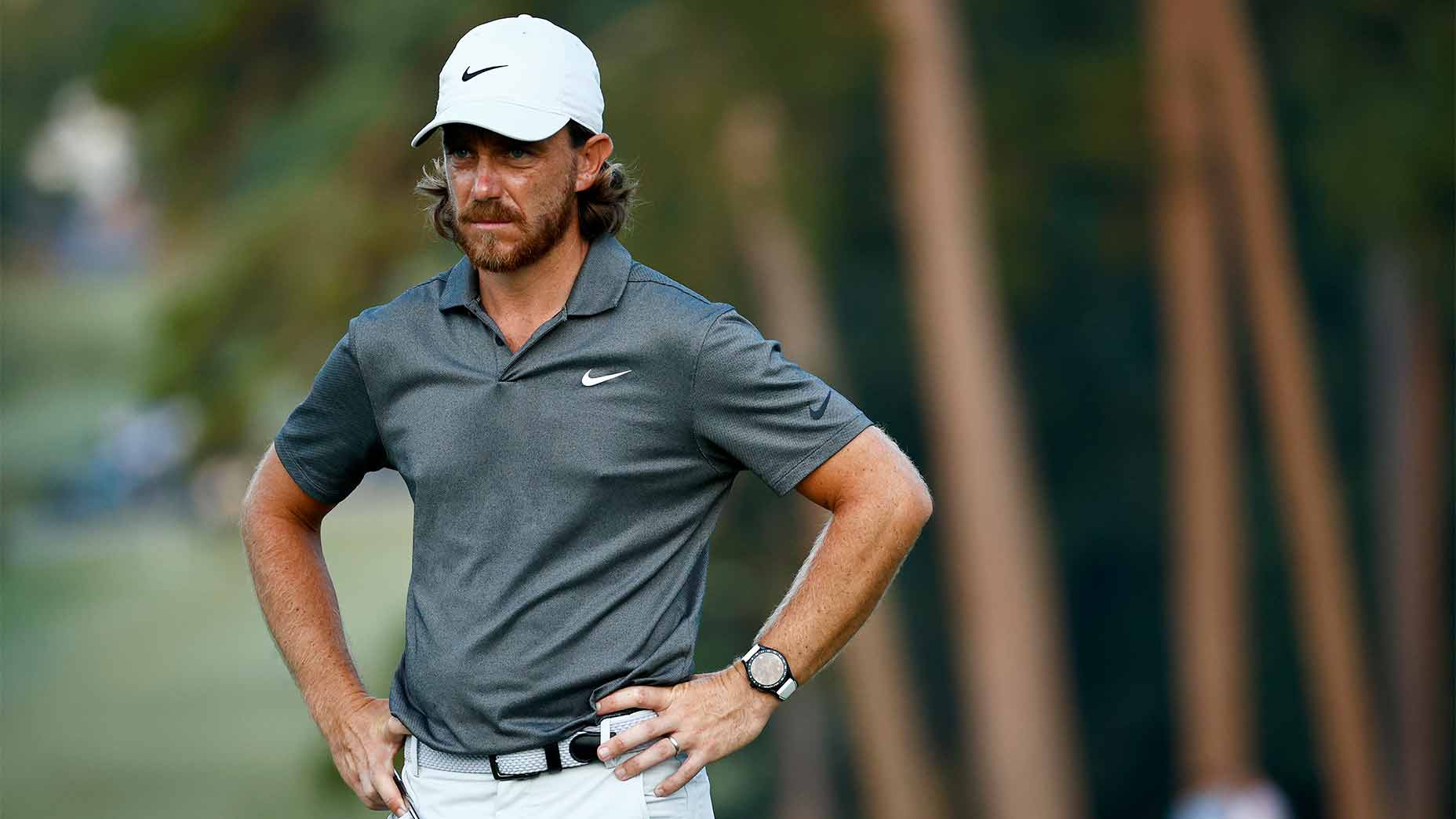Check in every week for the unfiltered opinions of our writers and editors as they break down the hottest topics in the sport, and join the conversation by tweeting us @golf_com. This week, we discuss the USGA’s newest anchor course, golf-course strategy, the best value golf courses and more.
1. Back in September, the USGA announced that Pinehurst No. 2 will host a U.S. Open every five to seven years, part of an agreement that also will see the governing body move some of its operations to North Carolina. At the time, an official said the USGA would be “working on some other agreements with other host clubs for longer term deals as well to round out the plan for where we go.” Now we know the second anchor club — Oakmont, which will host men’s Opens in 2025, 2034, 2042 and 2049 (and the women in 2028 and 2038). Merion also got Open nods for 2030 and 2050. Do you like the move, and what other course, or courses, should the USGA anoint as an anchor venue next?
Sean Zak, senior editor (@sean_zak): Love the move. People were quick to make jokes about the USGA naming hosts nearly three decades from now, but I get the sense that was just part of this process. The USGA made this announcement in tandem with local politicians, just like it did with Pinehurst last year. They’re getting buy-in from major golf locales that want to be known as the American golf locales. You won’t find anyone upset with Oakmont hosting a bunch of majors. As for the next anchor, Pebble is the obvious choice.
Dylan Dethier, senior writer (@dylan_dethier): Pebble makes lots of sense and will (and should!) stay in the regular rotation. But I don’t want to see only anchor sites — I understand the benefits of having some stability at those courses but part of the beauty of the U.S. Open is also in its ability to show us golf from different perspectives across the country, so I hope that continues, too.
Josh Sens, senior writer (@JoshSens): Agreed. On that note, I’d like to see one of Dylan’s favorites (Chambers Bay) get another crack at it.
Josh Berhow, managing editor (@Josh_Berhow): Pebble seems like the obvious next choice, if more anchor sites are coming, and perhaps Shinnecock Hills or Winged Foot after that, but I agree with the group. I think you want a few anchor courses to have a sense or normalcy you can always go back home to, but you need to keep options open for other developments and some first-time fliers, like what we saw recently with Chambers Bay and Erin Hills.
2. Speaking of Oakmont, James Piot beat Austin Greaser to win the U.S. Amateur there on Sunday, but one of the bigger storylines from the week, as reported by both Golf Channel and Golf Digest, centered around players taking advantage of the absence of trees at the iconic course and driving into adjacent fairways in order to set up better angles into greens. A few courses, most notably TPC Sawgrass during this year’s Players Championship, eliminated this practice by creating internal out of bounds. Two questions: Should players be allowed to play courses in ways not originally intended? And should courses be allowed to set up new boundaries, like TPC Sawgrass did?
Zak: My answer to the latter should take care of the former. Courses should be allowed to create new boundaries to protect a designer’s intentions. We don’t need precedent for it. Put your player’s cap on. Make the rule right now.
5 surprising players who lost their PGA Tour cards on SundayBy: Josh Berhow
Dethier: Players certainly shouldn’t be chided for finding more efficient ways to play existing golf holes. We’re smarter than ever about understanding where strokes and advantages are gained, which means great golfers can ditch old “conventional wisdom” that might tell them to lay back with an iron off the tee when the alternative is hitting driver to a large landing area on another hole. I think internal O.B. should only be used as a last resort, when other players’ safety is put at risk.
Sens: Go for it if you really think it’s necessary. But don’t kid yourself. Today’s elite golfers are already playing courses in ways that designers never intended. Adding internal O.B. doesn’t stop that. In an ironic twist, it further alters the course from what the architect originally intended.
Berhow: Players, at least the smart ones, will find ways to shoot the lowest score possible, and I have no problem with that. But irked courses should have the ability to bite back, whether we like it or not.
3. The Wyndham Championship came down to a record-tying six-man playoff, where Kevin Kisner won with a birdie on the second extra hole. Kisner has famously played well at the WGC Match Play and in his one Presidents Cup appearance, but still hasn’t played on a Ryder Cup team. The first six spots will lock two weeks from now after the BMW Championship, with six captain’s picks coming after the Tour Championship. Was this win what Kisner needed to finally solidify his spot on the team as a captain’s pick, if needed?
Zak: Nope! My answer to everyone who is surprised at Kisner’s Ryder Cup snubs is … play better! The guy is plenty good, and clearly a bit of a match-play dog, but his recent results don’t all imply great form. A win this week was wonderful, but it wouldn’t have happened without Adam Scott missing a 4-footer. He played well in Detroit and Hartford, but that didn’t translate to major championship courses this year. A missed cut at the Masters and the PGA before a T55 and a 73rd-place finish at the summer majors. So no, Kisner is good, but not great. And thus is not a lock. But he won this week and I’m sure that makes him a bit more confident for the playoff run.
Dethier: Correct. If you think Kisner should be on this team it’s because you think he’d be a good fit as a personality and as a player, not because he’s “deserving” through his stroke-play tournament schedule. I think he’d be a solid addition to the team but I don’t think he’s worked his way on. But he still has a brief audition left that he could nail.
Sens: If I were in Stricker’s shoes, I’d scrap the standings and the stat book and just go with my gut in this case. The gut says Kisner would be a Corey Pavin-like killer in the Ryder Cup, so I’d put him on the team. Poor choice? Maybe. But does it really matter? It’s just an exhibition, right? [Ducks.]
Berhow: I think he has a better shot now than some of you folks do. Let’s remember, there are six captain’s picks this year, not two like usual, and that leaves a lot more room for creativity. Right now he’s in the same tier, points-wise, as guys like Berger, Cantlay, Finau and Webb. I’m not taking all of those guys over Kisner, whose personality and match-play prowess would be a big asset to the squad.
Top 100 Value Courses in the U.S.: The best courses you can play for $150 or lessBy: GOLF’s Raters & Ran Morrissett
4. The final women’s major of the year, the AIG Women’s Open, begins on Thursday at Royal Troon in Scotland. American Nelly Korda has won three times in her last five starts, among those a major (the KPMG Women’s PGA) and a gold medal. As crazy as it sounds, are you taking Nelly Korda, or the field?
Zak: The field! Nelly has been really good all year, but let’s not get carried away. Lydia Ko is nipping at her heels … and there are a lot of people playing just as good as Lydia. More simply, LPGA depth is killer and I don’t think we’ll ever take anyone vs. the field in a sober way moving forward.
Dethier: You’re right, that does sound crazy. Winning is hard, period, and doubly so when you consider that the most dominant form in the world doesn’t alway carry to links golf. But a Nelly Korda win would certainly elevate her season to epic levels.
Sens: Even Tiger at his peak was not a favorite against the field. So it’s no disrespect to Korda to say that I’m taking the field.
Berhow: Nelly.
5. GOLF unveiled its first-ever list of the Top 100 Value Courses in the U.S.: The best courses you can play for $150 or less, with Bethpage Black and Lawsonia Links taking the top two spots. Value is obviously in the eye of the beholder. What’s the best public value course you’ve ever played?
Zak: If we’re going to fawn over Bethpage’s reduced rate for locals, I think it’s right we acknowledge how affordable the St. Andrews Golf Links is for residents of the town. St. Andrews residents and golfers from neighboring towns can get their hands on an annual pass for anywhere from about $330 to $1,000 on all the courses, not just the Old. It remains the best value in the world for anyone who pegs it at least five times.
Dethier: I played Wild Horse in Gothenberg, Neb., in the spring of 2010 for less than 40 bucks and it blew my mind. There’s a special combination of a great site and a small, golf-loving town that produces great value. I also remember playing Cato Park, a nine-hole muni in West Virginia, for $2.60. That’s some serious bang for your buck.
Sens: Kahuku is a nine-holer on the North Shore of Oahu. Hard on the water. As pretty a setting as you can get. Laidback pro shop. Friendly locals. I think I paid $12. It might be a few bucks more nowadays.
Berhow: I played Lawsonia this summer, which we obviously ranked second, and that was as good as advertised. Another course I played for the first time this summer is Keller Golf Course just outside of St. Paul ($47 walking). It hosted majors and was a regular Tour stop back in the day, and now it’s one of the best munis in the state. Well-conditioned, fun and playable, I just might have to make another tee time.












